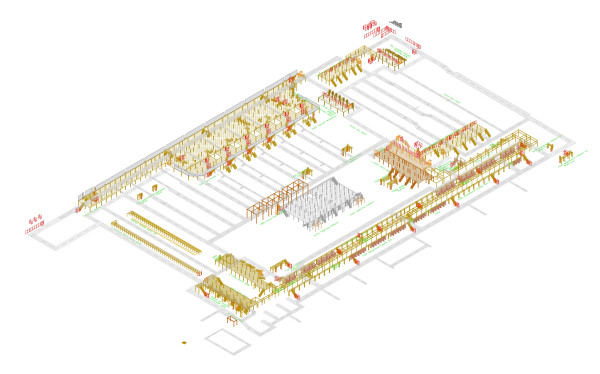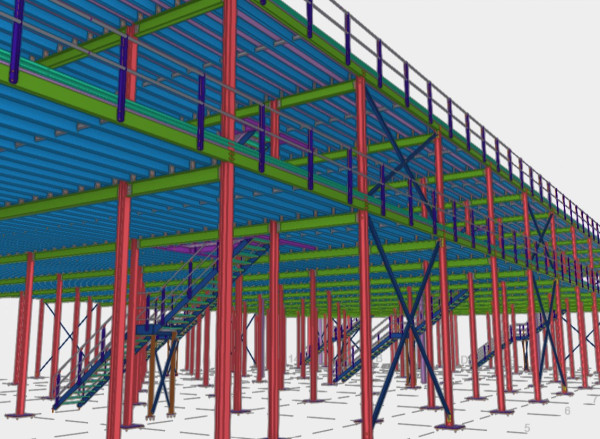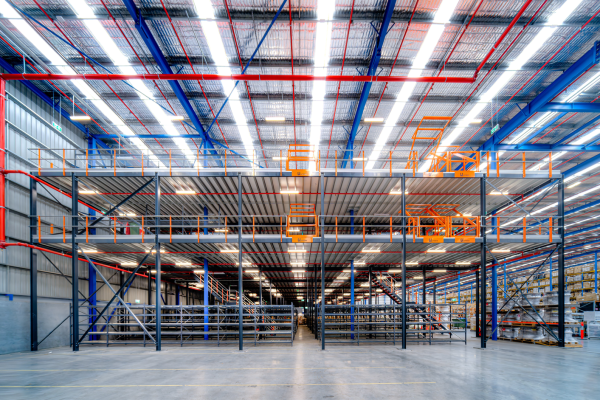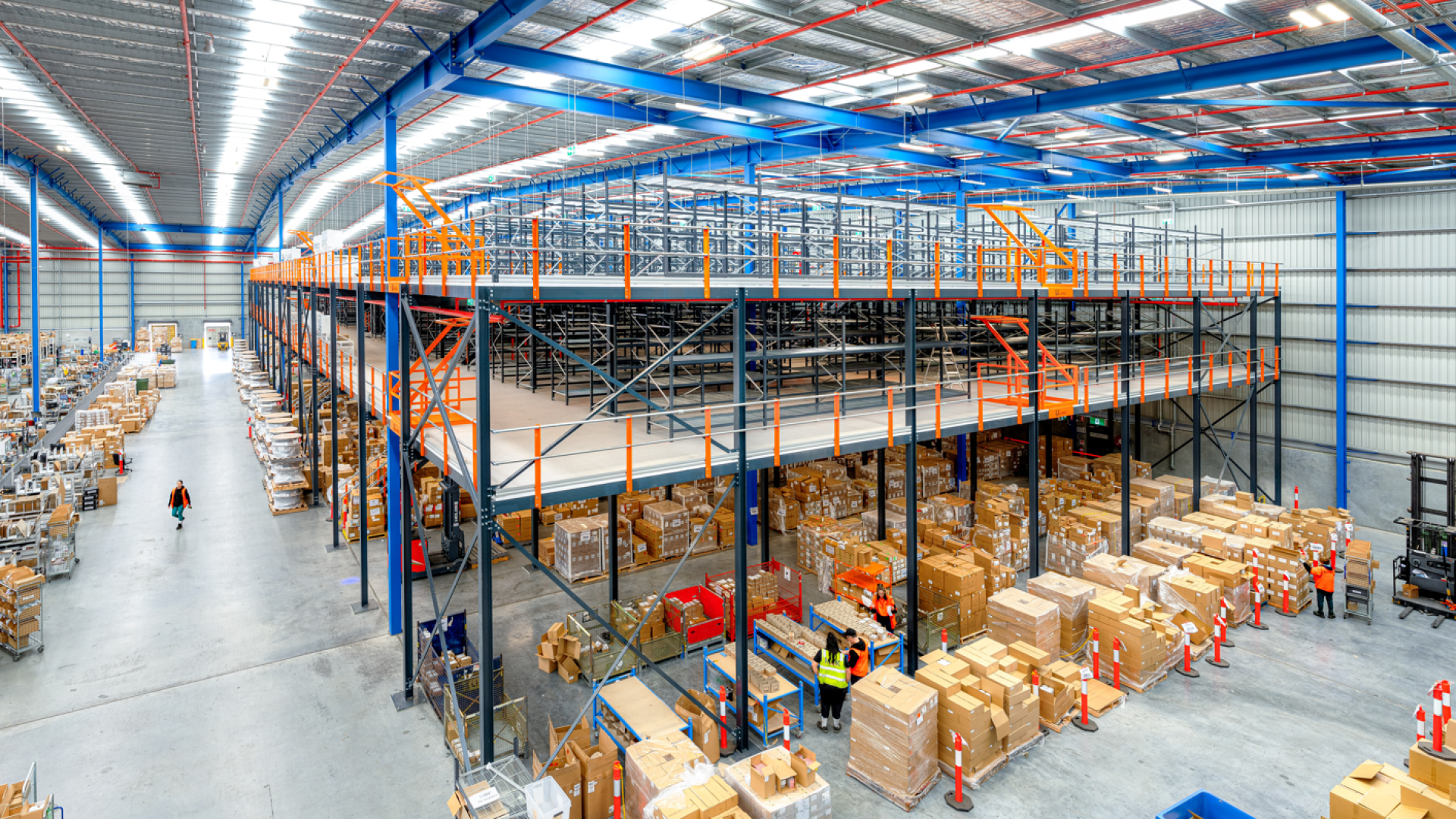Warehouses are constantly expected to achieve more with less. One of the biggest obstacles they encounter is insufficient space - and when there is not enough room for storage, material handling and baseline operations, productivity dips and profit growth is stifled.
If your warehouse feels cramped and disorganised, it is likely falling shy of peak performance. Fortunately, there are a number of ways to boost warehouse space utilisation and get your facility running like a well-oiled machine.
In this guide, we will list practical and innovative warehouse space-saving ideas to help you solve warehouse space problems and get the most out of what you already have.
Look at your current warehouse layout
Step one in solving warehouse space headaches is to take a critical look at your existing layout.
Understanding how space is currently used can reveal inefficiencies and highlight opportunities for improvement. Are there areas where workflow is consistently interrupted or space wasted? Consider the flow of materials and traffic patterns within the warehouse.
For example, are employees frequently crossing paths or doubling back to complete tasks? This inefficiency can be reduced by reconfiguring the space to support the natural flow of work, streamlining operation and clearing clutter.
Taking the time to evaluate your layout is a valuable part of any space management in a warehouse.
Leverage vertical space
Many businesses fail to capitalise on the vertical space available in their facility.
One of the best warehouse space-saving ideas is to extend storage upwards by installing tall shelving units or racks. This frees up ground-level space for other operations such as packing or dispatch areas.
However, building up requires a strategic approach. Be mindful of your warehouse’s fire suppression system and safety regulations when stacking inventory vertically.
Proper access allowances will need to be considered for things such as forklift or egress paths, ensuring employee safety.
Install a mezzanine floor
Of course, one of the most effective solutions for optimising warehouse space is the installation of a mezzanine floor system - the addition of a mezzanine allows you to create new storage or office spaces above your ground-level operations.
A modular mezzanine floor can significantly increase usable square footage without requiring an expensive expansion project.
Mezzanines can also improve safety by segregating office work from heavy machinery on the main floor. By moving administrative tasks to an elevated level, employees have a more comfortable workspace, while the warehouse floor can remain dedicated to production and logistics activities.

Reduce aisle widths
Another simple but effective method to solve warehouse space problems is by reducing aisle widths.
Often, warehouse aisles are wider than necessary, taking up valuable square footage that could be better utilised for storage. Narrow aisles can still accommodate forklifts and manual handling equipment, so consider redesigning your layout to minimise the width of aisles without compromising safety.
Narrowing aisle widths is especially beneficial when combined with high-density storage solutions, such as double-deep racks or drive-in racking systems.
It is important to note that you should always consult with a professional when looking at amending racking layouts, as this will affect the base build fire engineering report of the building and additional fire safety systems. Fire hose reels, fire egress paths, and the overall fire load of the facility could be affected by these modifications.
Consolidate inventory locations
Unnecessary duplication of products in multiple locations can lead to disorganisation, wasted time, and inefficient use of space.
To combat inventory inefficiencies, consolidate your inventory into dedicated, well-organised areas. This approach ensures quicker access to products and a streamlined picking process.
Another space-saving idea involves relocating slow-moving inventory to less accessible areas, such as higher racks or off-site storage. This frees up prime space in the warehouse for high-demand products.
Level up your storage solutions
Using appropriately sized storage systems is key to effective warehouse space utilisation.
Large, empty bins for small items and oversized pallets for smaller loads are common culprits of wasted space.
Smaller bins, adjustable shelving and pallet racking can help you make the most of your available space.
Custom shelving configurations are particularly useful for accommodating inventory of varying shapes and sizes. This approach ensures that you are using every cubic metre of storage space efficiently.
By evaluating your current storage methods and looking for opportunities to right-size your solutions, you can drastically improve your warehouse floorspace utilisation - and make life that much easier for your workforce, improving morale and reducing the risk of human error.

Practice cross-docking
Cross-docking is a practice where incoming shipments are unloaded directly into outbound trucks, reducing the need for long-term storage. By limiting how much inventory needs to be stored on-site, cross-docking helps solve warehouse space problems and enhances operational efficiency.
This method can be especially helpful for warehouses handling fast-moving goods that don’t need to sit in storage. By adopting a cross-docking system, you can reduce the amount of storage space required while speeding up order fulfilment.
Clear out obsolete inventory
Excess and obsolete inventory is a common space-waster (and time-waster) in warehouses. Unless you are selling wine or antiquated relics, inventory value does not usually appreciate with age. It is therefore important to regularly audit the inventory your warehouse is carrying, as this allows for the identification of products that are slow-moving, damaged, or obsolete.
Not only does holding obsolete inventory tie up capital and take up valuable warehouse space that could be used more productively - it also incurs a cost each time old stock needs to be checked (extending typically already-lengthy stocktake times).
To address the “old stock issue”, consider running clearance sales, bundling items, or donating unused stock to free up space. Moving obsolete inventory off the floor will not only solve warehouse space problems but also improve the overall organisation of your facility.
Create dedicated employee areas
Often overlooked in space management, employee workspaces such as break rooms, offices, or meeting areas can unintentionally encroach on critical warehouse space.
By creating dedicated areas for employees, such as consolidating break rooms or relocating offices to a commercial mezzanine, you can ensure that warehouse floor space is purely reserved for operational needs
Use a Warehouse Management System (WMS)
Finally, investing in a Warehouse Management System (WMS) can revolutionise space management in a warehouse.
A WMS optimises inventory placement, guides efficient picking routes, and provides real-time insights into space utilisation.
This technology allows you to track inventory movements, identify inefficiencies, and make data-driven decisions to improve the overall space management in your facility.

Partner with Unistor for warehouse optimisation
Maximising your warehouse space requires a strategic approach, leveraging every available opportunity to improve efficiency. From installing mezzanines to optimising vertical space and implementing innovative storage solutions, there are numerous ways you can achieve this. However, when it comes to long-term solutions, partnering with Unistor is your best bet.
As Australia’s leading manufacturer and supplier of mezzanine floor solutions, our wealth of industry experience will help you transform underutilised space into valuable, functional areas.
At Unistor, our experience dealing first-hand with intralogistic companies, knowledge of warehouse automation systems and warehouse storage solutions sets us apart from the competition, ensuring that we are diverse in the expertise and offering we provide.
Contact Unistor today to discover how we can help solve your warehouse space problems and optimise your operations for future growth.



